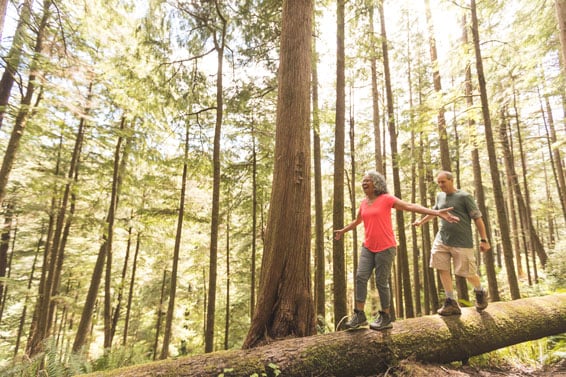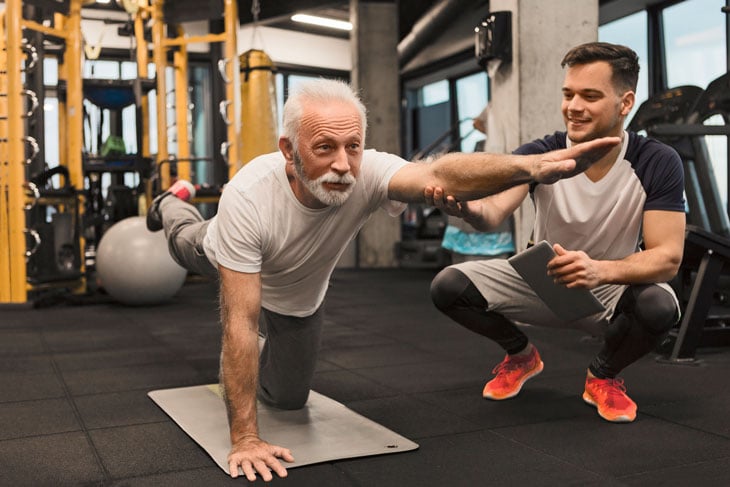
Balance Exercises for Seniors
One of the biggest fears many seniors face is falling without the ability to get back up. According to the National Council on Aging, one in four Americans aged 65 or older falls each year. This statistic is one that should make seniors think more intentionally about their own balance. As we age, we lose muscle strength and joint flexibility, as well as reduced vision and reaction time. The combination of these losses creates a perfect recipe for a fall. Thankfully, there are many easy things you can do in your daily life to help reduce your risk of falling.
Why Balance is Important
Balance keeps you upright and firmly on your feet and the key to all functional movement. Poor balance can result in falls, which in turn can lead to serious injury or the complete loss of mobility. Just the fear of falling can cause some people to stop trying to get around by themselves all together.
What Seniors Can Do to Improve Their Balance
Unfortunately, there is no “fountain of youth” you can employ to keep from aging. Over time, everyone's bodies change and overall balance will naturally decrease. However, by performing the following exercises on a regular basis, seniors can retain more of their current balance and possibly regain some they may have lost.
Standing On One Foot
This exercise is simple enough, but can be challenging to someone who has lost their ability to balance properly. This is the perfect first step towards regaining balance because it helps one rediscover their center of gravity. Be sure to use a sturdy chair or other piece of furniture to begin.
- Stand on one foot behind a sturdy chair, holding on for balance.
- Hold position for up to 10 seconds.
- Repeat 10-15 times.
- Repeat 10-15 times with other leg.
Leg Raises
This is a strengthening exercise, designed to build strength in the lower body. Use a chair for support, then simply lift one leg straight back, keeping the supporting leg bent. Hold for a second, then repeat as many as 15 times. Then, change to the other leg. The back leg raise will build strength in the buttocks and lower back. The second version of this exercise is the side leg raise. It primarily works the buttocks, thighs and hips. To do this, stand behind a chair and lift one leg to the side. Make sure the back stays straight and the toes remain facing forward. Bend the supporting leg. Hold for around one second, repeating 15 times, then move on to the other leg.
Remember - the best benefits from exercising will come from completing these exercises on a regular basis over a long period of time. While there may be some initial discomfort as the body adapts to new movements, the increased mobility and confidence that a stronger body provides are simply invaluable to older adults. For advanced forms of exercise, try out a form of yoga to use different parts of the body and strengthen new muscles.
How Often Should Balance Exercises Be Performed?
Simple balance exercises like standing on one foot can be done as many times as a person wants to do them. However, strength exercises like the back and side leg raises shouldn’t be practiced more than a couple days a week, and never on consecutive days. Similar to strength training, it's necessary to give the body time to recuperate and focus on other areas, such as brain fitness.
Strengthening the body and working on improving balance will go a long way in creating more enjoyable senior years. Get started now to improve your balance and keep your mobility for as long as possible! For information on finding a senior friendly fitness facility download our free checklist today!
About Presbyterian Senior Living
PSL is a mission-driven organization that lives our values of integrity, mutual respect, creative curiosity, and connectedness. Building on a legacy of 96 years, we provide residential and care services to more than 6,000 seniors in 27 locations across the mid-Atlantic region of Pennsylvania, Maryland, Ohio and Delaware.

